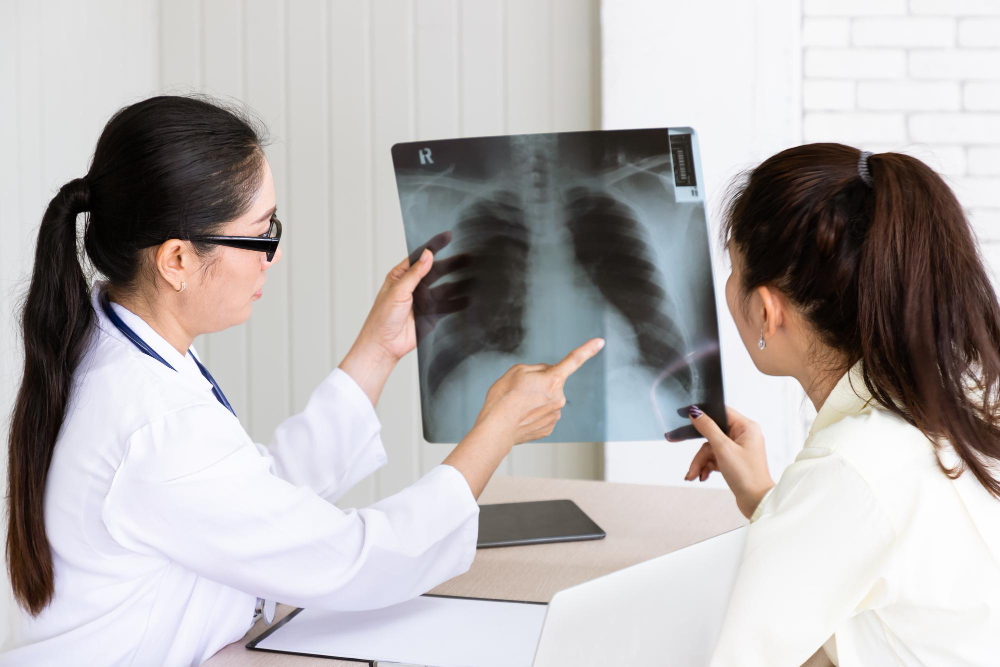Why HRCT Thorax Is Important
The HRCT Thorax test is essential for detecting diseases that often go unnoticed on regular X-rays. It offers precise visualization of lung patterns and airway structures, making it suitable for both diagnosis and follow-up in chronic respiratory conditions. Doctors recommend HRCT Thorax to:
-
Detect early-stage interstitial lung diseases and scarring (fibrosis)
-
Identify infection patterns like tuberculosis or viral pneumonia
-
Evaluate post-COVID lung damage or prolonged breathlessness
-
Assess bronchiectasis, emphysema, and chronic obstructive pulmonary disease (COPD)
-
Monitor treatment progress or surgical outcomes
-
Guide further diagnostic procedures such as bronchoscopy or biopsy
A timely HRCT Thorax scan helps clinicians determine the exact cause of breathing difficulty, persistent cough, or chest discomfort, ensuring faster and more targeted treatment decisions.
Benefits of HRCT Thorax Scan
HRCT Thorax offers unmatched detail and clarity compared to conventional imaging methods. Its major benefits include:
-
High Accuracy: Detects even minor structural changes within lung tissues.
-
Quick and Painless: The procedure takes only a few minutes and requires no recovery time.
-
Non-invasive: No surgical intervention or extensive preparation needed.
-
Early Detection: Identifies diseases before symptoms become severe, improving prognosis.
-
Precise Monitoring: Tracks disease progression or improvement during treatment.
-
Low Radiation Exposure: Uses advanced CT technology with optimized dose settings for patient safety.
With advanced imaging equipment at Diagnopein, patients experience superior image quality and quick turnaround times. The HRCT thorax scan results are analyzed by expert radiologists for accurate and reliable reporting.
How HRCT Thorax Test Is Done
The HRCT Thorax scan is simple, safe, and typically completed within 10–15 minutes. Patients are advised to remove any metallic objects and wear a hospital gown. Fasting is usually not required unless instructed by the doctor.
-
Positioning: The patient lies flat on the CT table, which slides into the scanner.
-
Breathing Instructions: You may be asked to hold your breath for a few seconds to avoid motion blur.
-
Image Capture: The CT machine rotates around the chest to capture detailed lung images from multiple angles.
-
Post-Procedure: You can resume normal activities immediately after the scan.
The HRCT Thorax test can be performed with or without contrast, depending on the clinical need. A contrast-enhanced scan provides additional clarity in evaluating blood vessels and masses. Results are typically available the same day, allowing your doctor to review the findings promptly.
Focus keywords: HRCT thorax procedure, HRCT scan process, HRCT without contrast, HRCT thorax preparation, HRCT chest imaging.
Parameters and Findings
The HRCT Thorax test evaluates various parameters including lung parenchyma, airway patterns, pleural lining, mediastinum, and vascular structures. Quantitative findings such as ground-glass opacity, honeycombing, or nodular densities help confirm conditions like:
-
Interstitial lung disease (ILD)
-
Pulmonary fibrosis
-
Bronchiectasis
-
Pneumonia or COVID-related lung damage
-
Pulmonary embolism
-
Chronic obstructive pulmonary disease (COPD)
At Diagnopein, our radiology team follows standard HRCT protocols ensuring optimal image resolution with minimal radiation exposure. Comprehensive digital reports are provided for easy sharing with your physician.








